- 中文
- EN
- Français
- 日本語
- 한국어
- 繁體中文
Exhibition About the Slow Life of the Song People Launched in the Hunan Museum

At 10 am on October 15, the exhibition“Enjoy the Elegance at Leisure: the Slow Life of the People in the Song Dynasty” kicked off in the Art Hall of the Hunan Museum. The exhibition was held by the Hunan Museum in collaboration with the Sichuan Museum, the Henan Institute of Cultural Relics and Archaeology, the Shaanxi Institute of Archaeology, the Liaoning Museum, the Shanghai Museum, the Anhui Museum, the Fujian Museum, the Zhejiang Institute of Cultural Relics and Archaeology, the Foshan Museum, the Yangzhou Museum, the Changzhou Museum and other 13 cultural and historical institutions.
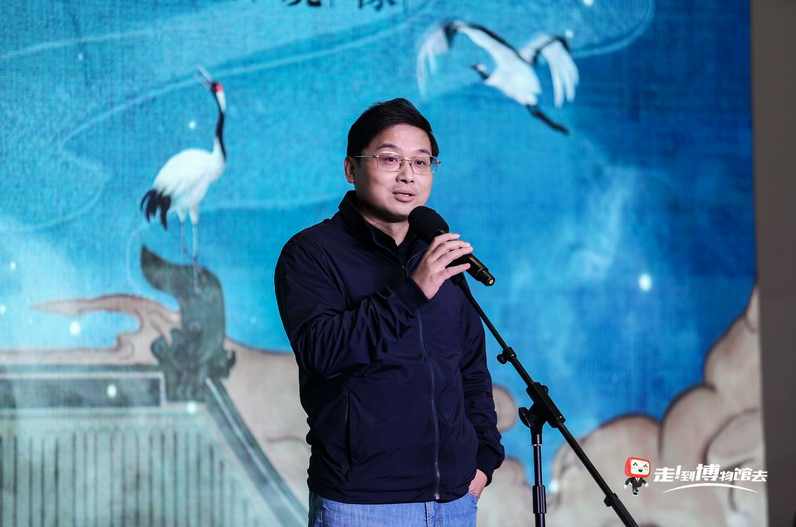
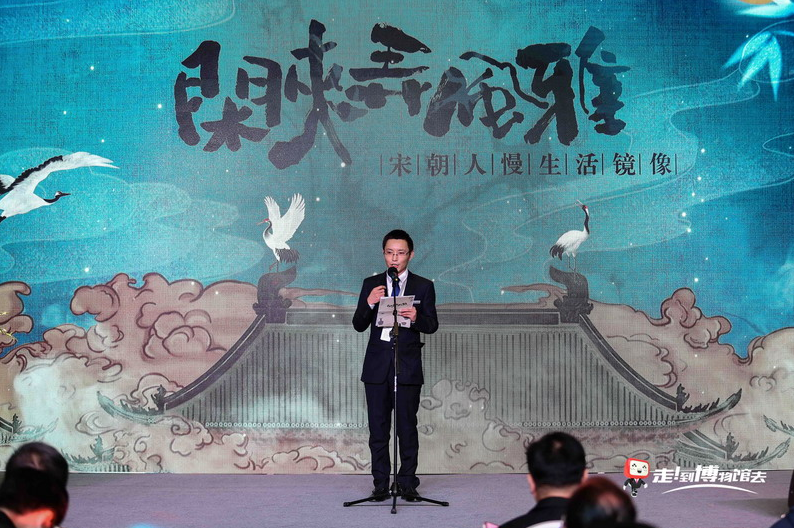
Related leaders of Hunan Provincial Department of Culture and Tourism and the Hunan Provincial Cultural Relics Bureau, heads and experts of several cultural and historical institutions including the Shanghai Museum, the Liaoning Museum, Zhejiang Institute of Cultural Relics and Archaeology, Henan Institute of Cultural Relics and Archaeology, the Foshan Museum, the Changzhou Museum, as well as trustees and senior members of the Hunan Museum, and the news media representatives were invited to attend the opening ceremony. At the ceremony, Wang Shujin, curator of the exhibition, Deputy Director and Curator of the Mawangdui Han Tomb and the Collection Research and Exhibition Center of the Hunan Museum, elaborated on the curatorial concept; Duan Xiaoming, Director of the Hunan Museum, and Wang Zhijie, deputy director of Hunan Provincial Cultural Relics Bureau, delivered speeches successively.



Through more than 80 pieces/sets of artifacts such as guqins, ceramics, calligraphy works, paintings, bronzes, and silverware, the exhibition focuses on the mundane life of people in the Song dynasty: drawing calligraphies and paintings, tasting tea and wine, burning incense, admiring the beauty of flowers, playing the guqin and chess, and appreciating ancient plays, etc. The exhibition presents the peaceful and elegant life paradigm of the literati and scholars of the Song Dynasty. In 2019, Liu Yuzhu, Director of the National Cultural Heritage Administration, ever said, "Museums should explore the way to integrate great traditional Chinese cultures such as 'qin, chess, calligraphy, painting, poetry, wine, floriculture, incense and tea into today's life through exhibitions, educational activities and other expressions, in order to improve the quality of people's lives."
“Enjoy the elegance at leisure, and appreciate the delicate taste of life.” The exhibition features an dynamic integration of cultural relic scenes and creative exhibition design, leaving visitors immersive experience. It takes the “slow pace of life” as its theme and selects nine scenes of the daily lives of scholars and literati to present and display.
The first scene is “ Playing Guqin by the Window”. A Guqin named “Wan He Song Feng” is placed against the painting “Listening to the Qin” (Ting Qin Tu) by Emperor Huizong of Song, with elegant and profound Guqin music playing in the background. The showcase and stand are designed to reproduce the style of ancient Guqin table, showing the poetic lifestyle of the literati and scholars of the Song Dynasty that features “a Guqin, a jar of wine, through the clouds by the mountain stream”(Note: excerpts of the poem, Song of Pilgrimage, by Su Shi).

“Leave the worries behind and feel the pure joy of playing chess.” In the second scene “A Chess Piece in Hand”, the showcase is designed to look like a chessboard, with artifacts such as chess pieces and chess piece jar placed aside, showing people’s love for chess in the Song Dynasty, and how they found ways to entertain themselves and lived a leisurely life.
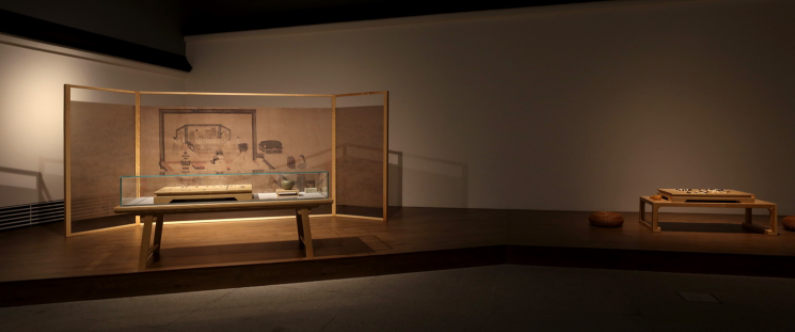
The third scene, "Wielding the Brush to Make a Calligraphy", employs well-crafted elegant stationery tools of study in the Song Dynasty and the calligraphy work, "Zi Shu Shi Juan” by Lu You, to reflect the joy of literati in the Song Dynasty in the study. At the same time, it also demonstrates the literati's emphasis on interest in poetry and calligraphy, as represented by Lu You. As Huang Tingjian says, calligraphy pursues “the cultivation of mildness and tranquility in disposition”. The scene also allows the public to experience the pristine yet timeless charm in calligraphy.

The fourth scene, “Painting in the Moment of Inspiration”, reflects that painting, as well as displaying and appreciating paintings, had become an indispensable part of life for literati in the Song dynasty; meanwhile, it also demonstrates their mindset of "convening their interests through paintings" and "entertaining themselves in paintings".
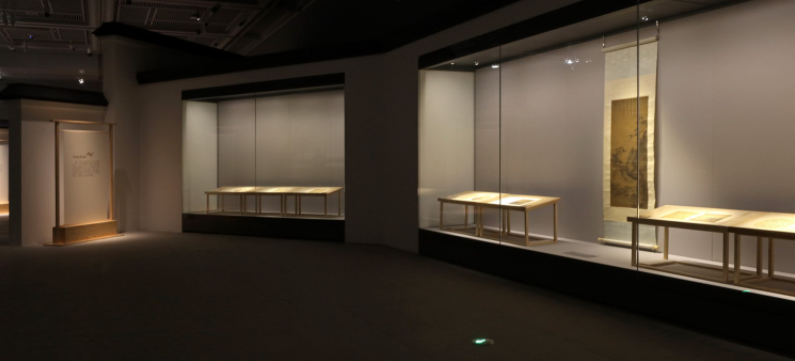
"Tea flourished in the Tang and Song Dynasties". In the Song Dynasty, people of different strata, from the Emperor to the ordinary people, demonstrated unprecedented engagement of and love for tea activities. The fifth scene, "Tea Tasting and Discussion", with the help of a complete tea set and "Painting of Grinding Tea"(Nian Cha Tu), reveals the prevalence of tea culture in the Song Dynasty. It is no exaggeration to say that tea had become the soulmate for the literati and scholars of the Song Dynasty. They made friends through tea and included tea into their poems and paintings, nurturing a refreshing, elegant, calm and natural temperament of literati.
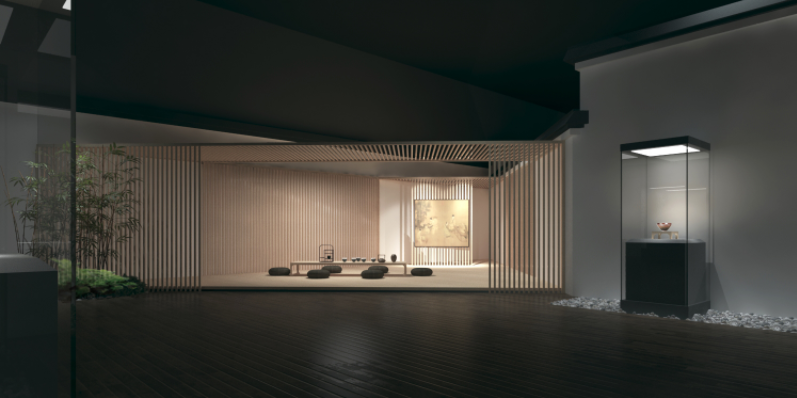
The sixth scene, “Toast and Drink in the Wind”, displays complete wine set and tableware against the background of “Literary Gathering”(Wen Hui Tu). It reflects the scene that they either chanted with a sip of wine, or sung while boozing. After all, with the elegance and intellectual ethos in their heart, they did not seek drunkenness but only the refined interest. “A wine lover's mind is not dipped in the boblet, but dwells in nature.” They regarded wine as a medium, to pursue indulgement in the nature and tranquility and calmness in their heart, and stayed indifferent to fame or gain.

The seventh scene is “Picking and Arranging Flowers”. By displaying objects and related auxiliary pictures such as vases and flower pots of the Song Dynasty, it tells the fact that literati were fond of elegant activities such as flower arrangement in their spare time, which reflects Song people’s love for beauty, flowers and nature as an aesthetic trend, and mirrors their restrained, rational, elegant and handsome temperament.
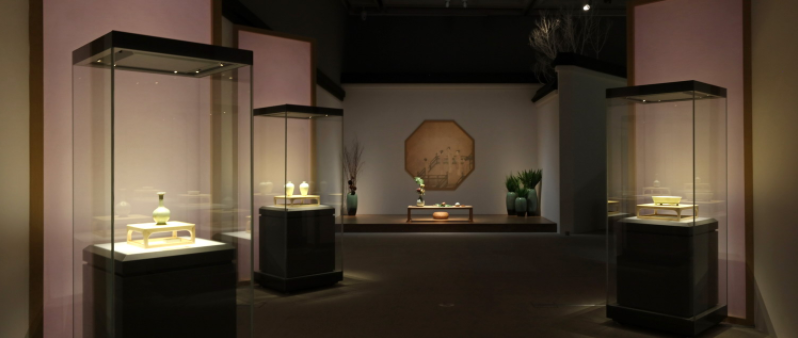
“The infinite meaning contained in the scriptures is all embedded in this stick of incense.” The eighth scene is “Burning Incense in Dwelling House”. By displaying objects and related auxiliary pictures such as censers and incense burners in the Song Dynasty, it reflects the tranquil life of the literati who loved to be accompanied by incense, and mirrors their elegant and humble psychology and personality.

The ninth scene, "Appreciation of the Antique", takes the ritual vessels in the Song Dynasty that restores the antique styles as the introduction, and highlights both the antique and innovative aspects in terms of their shapes and decorations through a small number of archaize Song vessels. In the Song Dynasty, people regarded antiquity as a fashion, and "prepared things to be used", integrating antiquity into the utility and furnishings of daily life. This highlights people’s aesthetic preference towards antiquity at that time.

Based on the conventional exhibition visual model, and with the help of art design, this exhibition creatively uses modern minimalist scenes for the first time to create an environment that integrates education and interaction as a whole. At the same time, for the sense of vision, there are animated demonstrations of the tea ordering process and smoking incense; for the sense of hearing, there are beautiful Guqin music playing in the background; for the sense of smell, visitors can smell the faint fragrance in the incense display area; for the sense of taste, we prepared snacks and tea for visitors to taste; for the sense of touch, visitors can play chess in the exhibition hall or play the Guqin on the spot. The exhibition can fully activate your five senses of "sight, sound, smell, taste, touch" and allows you to experience the wonderful slow pace of life of the Song people throughout the exhibition.
Museums serve not only as the inheritor and disseminator of outstanding traditional Chinese culture, but also as the advocate and promoter of active and healthy lifestyles. From the perspective of the concern about social issues and in order to serve the public today, the Hunan Museum planned and launched the exhibition, “Enjoy the Elegance at Leisure: the Slow Life of the People in the Song Dynasty”. With a focus on digging into the social value of cultural relics, the exhibition aims at conveying and showing the public a lifestyle of tranquility and elegance, so that the audience can feel the charm of traditional culture, taste another kind of beauty in life, get to discover and create their own "aesthetics of life", and thus introducing an elegant paradigm of life and cultural phenomena.
Tips:
Full-price ticket: RMB 50 per person
Concession ticket: RMB 25 per person (full-time undergraduate students and below, people aged 60-65 years old, low income households, enjoy price concessions with valid documents.)
Free admission: Children under 14 years old, elderly people over 65 years old, persons with disabilities, military personnel in active service and retired military cadres with valid documents.
Date: Oct, 15th, 2020-Jan, 15th, 2021
Opening hours: 9:00-17:00 every Tuesday to Sunday(admission closes at 16:00)
Closed on Mondays, except for public holidays.
Venue: No.2 Special Exhibition Hall, 1F
Tel:0731-84415833, 0731-84475933



